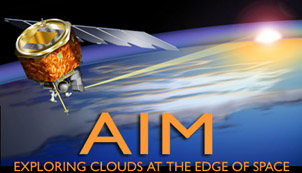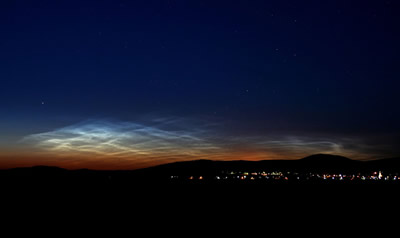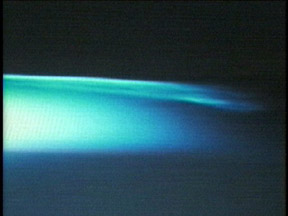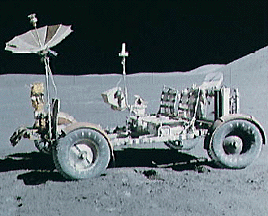Click on image for full size
Courtesy of NASA (Hampton University)
AIM Mission Overview
The Aeronomy of Ice in the Mesosphere (AIM) mission is focused on the study of Polar Mesospheric Clouds (PMC’s), also known as noctilucent clouds (NLC’s). The mission will look at these clouds that form about 50 miles above the Earth’s surface, specifically why they form and why their formation varies.Noctilucent clouds are very special clouds. They are only seen high in the sky just after the Sun dips below the horizon. In the past, they were mainly seen in the summer months, near the poles of the Earth. They sometimes glow an electric, blue-white color which make them seem very mysterious. These beautiful clouds that hover at the very edge of space seem to be getting brighter and closer to the equator in recent years. PMC’s are definitely connected to the meteorology of the mesosphere. What the AIM mission will help scientists determine is why the formation of PMC’s is changing and if PMC formation is an indicator of global climate change.
The AIM satellite has three instruments aboard: CIPS, SOFIE and CDE. CIPS is an instrument that will take images of the clouds to determine when and where they form, and to document what they look like. SOFIE will measure the temperature and composition of the mesosphere, which will tell scientists more about the chemistry and movement of air in the mesosphere that might lead to cloud formation or cloud dissipation. Finally, CDE will measure how much dust enters the mesosphere from meteors. It is possible that this dust is what water vapor is freezing onto to form PMC’s and thus meteor dust is an important component of cloud formation to understand.
The AIM spacecraft will be launched in September 2006 aboard a Pegasus rocket in a mission originating from Vandenberg Air Force Base, California. The expected mission life of AIM is 26 months.
Hampton University (HU) is NASA’s main contractor for the AIM mission, but HU will be working along with many other co-investigators at various universities and institutions.














